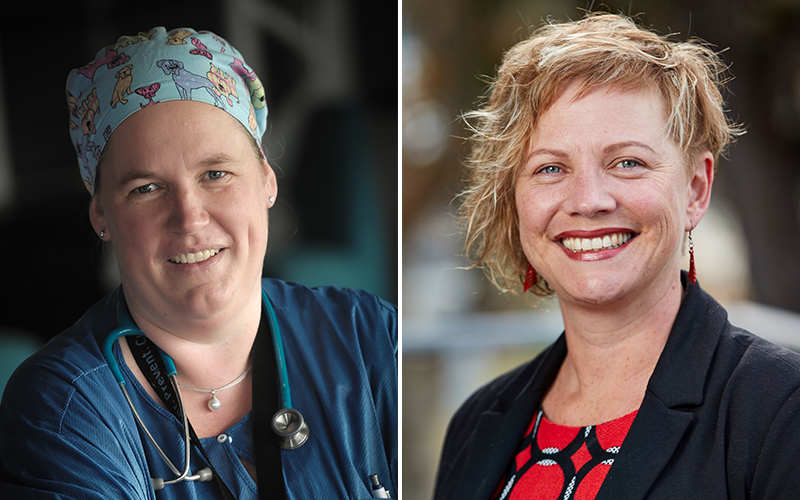Search
Research
Streptococcus pyogenes pharyngitis elicits diverse antibody responses to key vaccine antigens influenced by the imprint of past infectionsKnowledge gaps regarding human immunity to Streptococcus pyogenes have impeded vaccine development. To address these gaps and evaluate vaccine candidates, we established a human challenge model of S. pyogenes pharyngitis. Here, we analyse antibody responses in serum and saliva against 19 antigens to identify characteristics distinguishing 19 participants who developed pharyngitis and 6 who did not.
Research
Systematic Review of Household Transmission of Strep A: A Potential Site for Prevention That Has Eluded AttentionAlthough Streptococcus pyogenes (Strep A) is the sixth-most common infectious disease globally, its transmission within the household remains an understudied driver of infection. We undertook a systematic review to better understand the transmission of Strep A among people within the home, while highlighting opportunities for prevention.
Research
Rheumatic heart disease across the Western Pacific: not just a Pacific Island problemWe aimed to review RHD burden in Western Pacific Region outside Oceania to identify countries with high RHD burden
Research
Long-term outcomes from acute rheumatic fever and rheumatic heart disease: A Data-Linkage and Survival Analysis ApproachAdverse outcomes for people with acute rheumatic fever and rheumatic heart disease and the effect of comorbidities and demographic factors on these outcomes
Research
Antibiotic duration and timing of the switch from intravenous to oral route for bacterial infections in children: systematic review and guidelinesSystematic review of antibiotic duration and timing of intravenous to oral switch for paediatric infectious diseases and evidence-graded recommendations
Research
Clinical development strategy for a candidate group A streptococcal vaccineThis review outlines a clinical development strategy detailing the phases of development required for registration of a candidate Group A streptococci vaccin
Research
Cellulitis in children: A retrospective single centre study from AustraliaTo characterise the epidemiology, clinical features and treatment of paediatric cellulitis. Methods A retrospective study of children presenting to a paediatric tertiary hospital in Western Australia, Australia in 2018.
Research
Secondary Antibiotic Prophylaxis for Latent Rheumatic Heart DiseaseRheumatic heart disease affects more than 40.5 million people worldwide and results in 306,000 deaths annually. Echocardiographic screening detects rheumatic heart disease at an early, latent stage. Whether secondary antibiotic prophylaxis is effective in preventing progression of latent rheumatic heart disease is unknown.
Research
Rheumatic heart disease in Indigenous children in northern Australia: Differences in prevalence and the challenges of screeningThis study compared regional differences in the prevalence of rheumatic heart disease in Indigenous Australian children, and describes the logistical and...
Research
Evolution, Evidence and Effect of Secondary Prophylaxis Against Rheumatic FeverThe association between group A streptococcal infection and rheumatic fever (RF) was established in the early 20th century.

News & Events
Paediatric anaesthetist named a WA Young Tall PoppyA leading paediatric anaesthetist and researcher focused on making anaesthesia safer and more comfortable for children has been named a 2022 Western Australian Young Tall Poppy.
Research
What’s inside the box? Or shall we think outside the box?With the deadly and highly transmissible SARS-CoV-2 virus causing the COVID-19 pandemic, there is global concern about the danger of contaminating healthcare workers (HCW), particularly during airway management of infected patients.
Research
Perioperative pediatric tonsillectomy analgesia: A single-center review of practice and cost-effectiveness analysisTonsillectomy is one of the most common pediatric surgeries and results in considerable postoperative pain. Insufficiently managed pain is costly, risks physiological and psychological consequences with multi-modal analgesia widely recommended to minimize opioid-based agents. We determined adherence to multi-modal analgesia guidelines and assessed cost-effectiveness. We undertook a cross-sectional cohort study at a tertiary pediatric institution in Perth, Western Australia, retrospectively identifying selected patients undergoing tonsillectomy over two discrete periods of 6-week duration.
